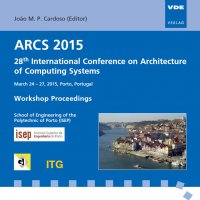Public Space Ambient Intelligence Systems: Benefits, Approaches and Challenges
Konferenz: ARCS 2015 - 28th International Conference on Architecture of Computing Systems
24.03.2015 - 27.03.2015 in Porto, Portugal
Tagungsband: ARCS 2015
Seiten: 6Sprache: EnglischTyp: PDF
Persönliche VDE-Mitglieder erhalten auf diesen Artikel 10% Rabatt
Autoren:
Al-Anbuky, Adnan (Auckland University of Technology, Centre for Sensor Network and Smart Environments, 24 St. Paul Street, Auckland, New Zealand)
Rudolph, Stefan; Haehner, Joerg; Tomforde, Sven (Organic Computing Group, University of Augsburg, Eichleitnerstr. 30, 86159 Augsburg, Germany)
Inhalt:
Modern public shared spaces offer a wide range of business and social functionalities. While they need to be efficiently operated, offering a secure environment is a prime objective. Manifold sensors and actuators, such as public lamps, surveillance systems or emergency phones, have been utilized in order to achieve this goal. Lights, cameras and a variate number of other sensors have been dealt with as discrete components. The problem may be looked at generically in solving the spatiotemporal requirements of monitoring the complete space, but plenty of factors should be carefully considered for feasible solution. The paper looks into utilizing the existing infrastructure within shared spaces, such as public lampposts for establishing a smart monitoring and management sensor-actuator networks or what we call public space Ambient Intelligence (PSAmI). We do this by presenting an appropriate system organization for such systems that is based on a real public space, Albert Park, NZ. Furthermore, we discuss the potential benefits of the integration of heterogeneous sensors and actuators. Afterwards, we explore the possible configurations for the lamp posts with a special focus on the camera component. Also, we identify the research challenges for realization of a PSAmI system.


